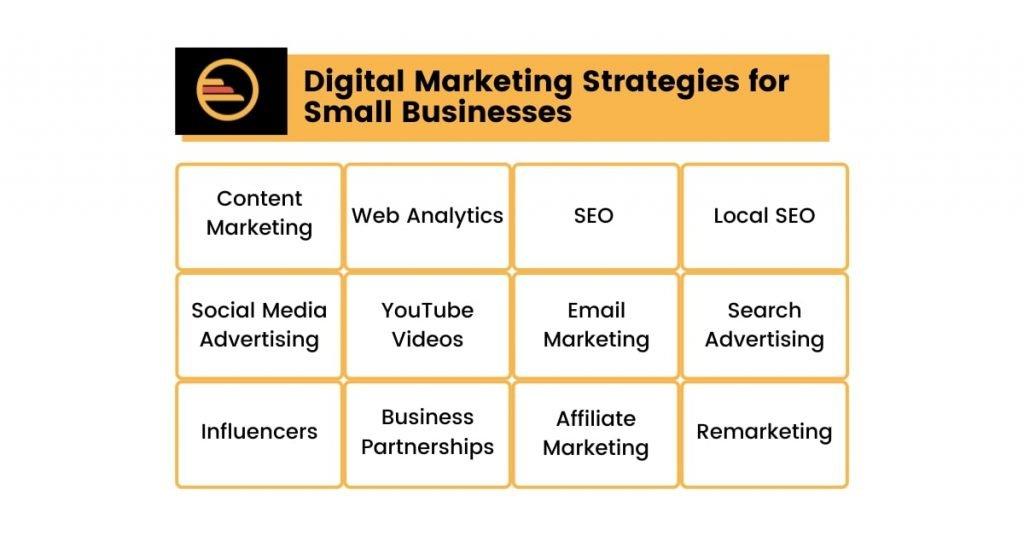Social media is more than just a digital playground—it’s a powerful tool for small businesses. But how do you turn those likes and shares into real growth? Creating a solid social media strategy is your answer. This step-by-step guide will walk you through everything you need to know to make social media work for you. From identifying your audience and choosing the right platforms to crafting engaging content and measuring success, we’ve got you covered. You’ll learn actionable tips, easy-to-follow processes, and maybe even a chuckle or two along the way. So grab a cup of coffee, and let’s get started on your journey to social media success!
Understanding the Importance of a Social Media Strategy for Small Businesses
For small businesses, crafting a social media strategy is not just another item on the to-do list; it’s a vital tool for growth and connection. A well-defined plan helps identify target audiences, guiding businesses on where to focus their efforts. This leads to higher engagement, increased brand awareness, and ultimately more loyal customers. When you know who you’re talking to, your messages become more meaningful. Think of it as having a conversation at a party—knowing your audience helps you share stories that resonate.
Effective social media strategies also drive measurable results. Tracking engagement metrics informs businesses about what’s working and what isn’t. Regular analysis allows for adjustments, ensuring strategies stay fresh and relevant. Here’s a quick overview of key metrics to focus on:
| Metric | Description |
|---|---|
| Engagement Rate | Measures interactions like likes, shares, and comments relative to total followers. |
| Reach | Indicates how many people have seen your posts. |
| Conversion Rate | Tracks the percentage of visitors who take a desired action, like making a purchase. |
| Follower Growth | Shows how your audience is expanding over time. |
By keeping a close eye on these metrics, small businesses can adapt their strategies and make smarter decisions. Remember, social media isn’t just about posts; it’s about building a community, so stay engaged and listen to your audience’s feedback. This two-way communication strengthens relationships and encourages transparency.
Identifying Your Target Audience and Defining Clear Objectives
Understanding who you want to reach is crucial for your social media success. Take the time to create a detailed profile of your ideal customer. Ask yourself these questions: What age group are they? What hobbies do they enjoy? Where do they typically spend their time online? By identifying specific demographics, interests, and behaviors, you can effectively mold your content to resonate with the right audience. Keeping your messaging tailored to these insights will foster engagement and make every post more impactful.
Once you have a clear picture of your audience, it’s essential to define what you aim to achieve with your social media efforts. Setting measurable objectives will guide your strategy and keep you focused. Here are a few examples of what you might consider:
- Increase brand awareness by growing your follower count.
- Boost engagement through likes, comments, and shares.
- Drive traffic to your website or landing page.
- Generate leads that convert into customers.
By clarifying your goals, you not only create a roadmap for your actions, but you also gain the ability to track your progress over time. Check out the table below for a quick snapshot of how defining objectives can enhance your approach:
| Objective | Key Performance Indicator | Expected Outcome |
|---|---|---|
| Increase brand awareness | Follower growth rate | Broader reach and recognition |
| Boost engagement | Engagement rate | Stronger community interactions |
| Drive traffic | Website click-through rate | Higher site visits and potential sales |
| Generate leads | Lead conversion rate | Increased customer inquiries |
Choosing the Right Platforms to Maximize Your Reach
Finding the right channels to amplify your message is essential for your growth. Each platform has its quirks and unique audience. Ask yourself these questions to narrow down your options:
- Who am I trying to reach? Understand your target demographic. Different platforms attract different age groups and interests.
- What’s my content type? Visual content performs better on Instagram, while informative articles shine on LinkedIn.
- How much time can I commit? Some platforms require more engagement than others. Choose what fits your schedule.
| Platform | Best For | Audience Type |
|---|---|---|
| Community building & promotional content | All ages | |
| Visual storytelling & brand aesthetics | Young adults 18-34 | |
| Networking & thought leadership | Professionals & B2B | |
| Real-time updates & customer interaction | Young adults & news junkies |
Once you identify the suitable platforms, start experimenting! It’s perfectly fine to test waters on one or two before diving deeper. Monitoring performance is key. Don’t be disheartened if your first post doesn’t go viral. Building an online presence takes time, patience, and persistence—which are all part of the adventure.
Crafting Engaging Content That Resonates with Your Audience
Crafting content that truly connects with your audience is an art form. It begins with understanding who they are and what they find valuable. Start by determining their interests and pain points. This knowledge allows you to create tailored messages that resonate on a deeper level. Here are some effective brainstorming techniques to guide your content creation:
- Audience Feedback: Regularly check comments and messages for insights.
- Social Listening: Monitor conversations relevant to your industry.
- Analytics Review: Study engagement metrics to identify popular topics.
Once you’re equipped with this understanding, it’s time to employ a variety of content formats. Mixing up your content keeps things fresh and exciting. Consider using videos, infographics, and blog posts to provide information in different ways. Check out the table below for some content ideas that might inspire your next post:
| Content Type | Description | Best For |
|---|---|---|
| Videos | Short clips that explain or entertain. | Engaging a visual audience. |
| Infographics | Visual representations of data or processes. | Quick, digestible facts. |
| Blog Posts | Long-form articles that delve into topics. | Thought leadership and SEO. |
Measuring Success: Key Metrics to Track Your Performance
To truly understand how your social media strategy is performing, keep an eye on key metrics. Tracking these indicators allows you to see what’s working and what isn’t, giving you the power to tweak your approach. Some important metrics to consider include:
- Engagement Rate: This includes likes, shares, and comments. It shows how well your audience connects with your content.
- Reach and Impressions: Reach indicates how many unique users saw your content, while impressions show the total number of times it was displayed.
- Follower Growth Rate: Track how quickly your follower count is increasing. A steady growth signals successful outreach.
- Click-Through Rate (CTR): This measures how many people clicked on a link in your post, leading to your website or landing page.
- Conversion Rate: This reflects the percentage of users who completed a desired action, like signing up for a newsletter.
Consider setting benchmarks for these metrics to better gauge your progress. Here’s a table to help you visualize your targets:
| Metric | Quarterly Target | Current Performance |
|---|---|---|
| Engagement Rate | 5%+ | 4.7% |
| Follower Growth Rate | 10% increase | 8% increase |
| Click-Through Rate | 2%+ | 1.5% |
| Conversion Rate | 3%+ | 2.8% |
Regularly reviewing these numbers will empower you to make informed decisions that drive your social media strategy forward. Don’t hesitate to adjust your content based on this feedback—after all, adapting is crucial for success!
Adjusting Your Strategy Based on Insights and Feedback
To truly enhance your social media strategy, embracing insights and feedback is essential. Regularly analyzing engagement metrics and audience responses allows you to understand what’s resonating and what’s not. Pay attention to both qualitative and quantitative data—like comments, shares, and likes. This information can reveal valuable patterns. You might notice that posts featuring human stories receive more engagement than product promotions. Adapting your content accordingly ensures a closer connection with your audience.
Implementing changes based on this knowledge doesn’t have to be overwhelming. Create a flexible plan that allows for quick adjustments. Here are some ways to effectively incorporate insights:
- Test and Learn: Experiment with different types of content and track their performance.
- Solicit Feedback: Ask your audience what they enjoy and what they want to see more of.
- Monitor Trends: Stay updated with the latest social media trends to keep your content relevant.
| Metrics to Track | Description | Actionable Steps |
|---|---|---|
| Engagement Rate | The percentage of your audience interacting with your posts. | Revise content that underperforms; consider different times or formats. |
| Follower Growth | Measures how fast your audience is growing. | Infuse your posts with engaging call-to-actions to attract new followers. |
| Top Performing Content | Identify which posts yield the most engagement. | Double down on similar themes to maximize impact. |
Future Outlook
Creating a social media strategy isn’t just a checklist; it’s a dynamic road map that guides small businesses to success online. By following these steps, you simplify the process and can genuinely connect with your audience. Remember, each post, tweet, or story is an opportunity to tell your brand’s story and engage your customers.
As you embark on this journey, be patient. It takes time to build an audience and see the fruits of your efforts. Don’t worry if things don’t go perfectly at first. Like learning to ride a bike, it’s normal to wobble a bit before you find your balance. Embrace the learning curve and adjust your strategy based on what works.
Keep an ear to the ground. Social media trends can change faster than a cat chasing a laser pointer. Stay updated and be ready to pivot your strategy as needed. Engaging with your audience positively can yield big rewards. Respond to comments, share behind-the-scenes moments, and let your personality shine through.
As you navigate the ever-evolving world of social media, remember—it’s about quality, not just quantity. Focus on creating meaningful content that resonates with your audience. The goal isn’t to be everywhere, but to create a strong presence where it matters most for your business.
So, grab your digital toolkit, get creative, and start implementing your new social media strategy today. Your small business has huge potential waiting to be unleashed. And, who knows? You might find yourself enjoying the ride more than you expected. Happy posting!

